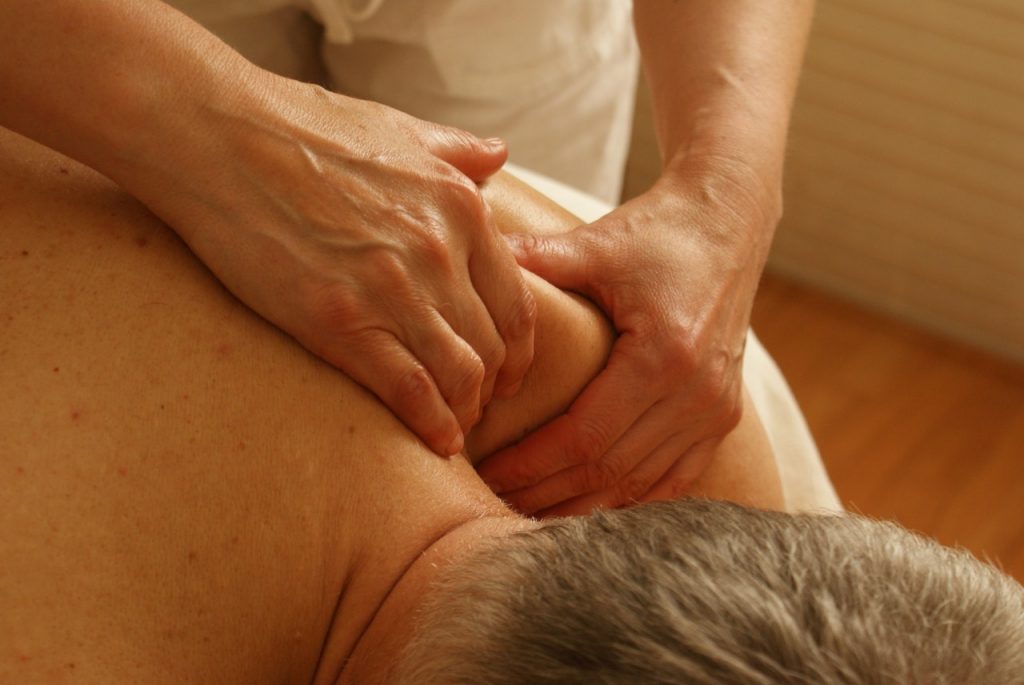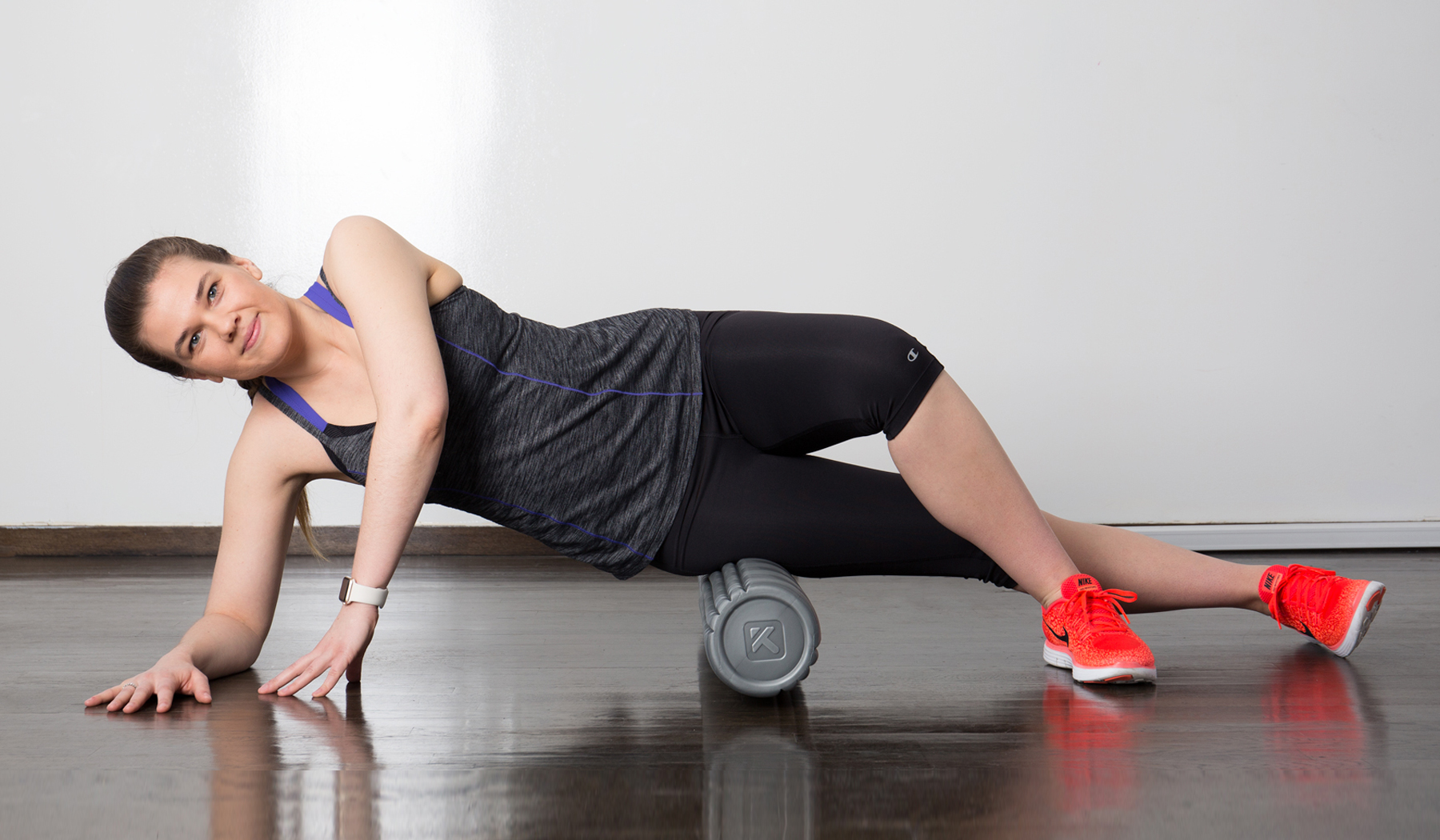How Does Foam Rolling Work?
Foam rolling has a lot of benefits, BUT what is it actually doing?
Many people think foam rolling is a complete waste of time, but science has shown otherwise. With that said, it has certainly fallen out of the spot light since its inception in the late 90's and early 2000's, when the term "Self Myofascial Release" first made its debut on the health and fitness scene.
At that time, like most trends, foam rolling was the "new" thing; adamantly adopted by fitness professionals, and health practitioners alike. It was touted as the DIY method for resolving pain, improving flexibility and mobility, and managing soreness and fatigue. And to its credit, many of these proposed benefits still ring true.
What's less accepted is the explanations as to WHY it produces these results.
Now, I guess you could stop here and say, "who cares why...as long as it works", and I wouldn't fault you for feeling that way. After all...if it works, it works.
But on my side of the fence, as a fitness professional, I feel it necessary to understand some of the proposed mechanisms as to HOW foam rolling or SMR does what it does.
If we can better understand the mechanisms, this may lead more efficient methods being developed.
Trigger Points, Adhesions, Breaking Up Tissue
If you were to ask what foam rolling does back in the day, you might of heard some variation of the following statement:
"It breaks us adhesions, and trigger points within a muscle, which allow the muscles to move more freely."
Or some iteration of this idea.
And while this theory is still on the table, it is becoming less and less of a valid explanation. This is due, in large part, to the questioning of whether or not you can actually produce enough force to affect tissue quality by simply jamming a ball in your butt cheek or, for that matter, pressing on muscles with your hands.
And as matter of fact, this PAPER, sought to answer that question, and their discoveries were not in support of this claim. It goes on to say:
"Our calculations reveal that the dense tissues of plantar fascia and fascia lata require very large forces—far outside the human physiologic range—to produce even 1% compression and 1% shear."
Now, this opens up a whole other can of worms with regards to manual therapy practices, but we won't touch on that.

What can be said, in light of this research, is what we once thought was happening - breaking up tissue, releasing trigger points, loosing adhesions, etc. - is probably not happening at all.
This paper goes on to say the tissue that can most likely be manipulated via manual therapy is probably nasal tissue as it requires the least amount of force, as measured by PSI (pounds per square inch), to be remodeled. I don't know how many people are looking to get their nasal passages massaged, but have it.
So this beckons the question...
...what's actually happening?
More Pain Makes Less Pain
One of the more prevailing ideas is more pain creates less pain, and it refers to a concept called conditioned pain modulation.
Conditioned pain modulation, to put it simply, is like stubbing your toe and in order to relieve the pain you experience from that, you might have you friend slap you in the face. The phenomenon that occurs is, you still experience pain, but to a much lesser extent. With the caveat being, you must see a slap in the face as a viable, and preferred method for relieving pain.
Now, how does this relate to foam rolling?
Well if you have ever foam rolled you may have noticed that is not the most pleasant experience. There is a level of tolerable pain purposely induced.
If you have been coached through rolling, you may have been instructed to, “find a sore spot and place the foam roller (or foam rolling implement) there”.
“Finding a sore spot” means "find the pain", and once you do, grind into it until less pain is experienced.
Often this results in less pain felt in the affected area as well as in an increased ROM (range of motion) experienced in adjacent joints. This conditioned pain modulation is believed to lessen the perception of “threat” which can manifest itself by way of muscle guarding, stiffness, and altered movement patterns all of which aid in decreased ROM and, in turn mobility and flexibility.
The thought being, that if I can decrease this perception of threat through a preferred method if intervention, i.e. foam rolling, the brain will decrease muscular tone, and stiffness, thereby allowing for an increased ROM.
Now I tend to fall on this side of the research in terms of explaining what foam rolling is ACTUALLY doing, but this topic is still up for debate.
Now after reading all of this you are asking…
“Well, should I foam roll or not?”
Here is my opinion on the topic.
Does foam rolling help with recovery?
Yes, there is research that shows that foam rolling can help with the management of fatigue and muscles soreness. It has also be shown with helping you get back to performance levels faster then if you did not foam roll. So foam rolling AFTER a training session is probably one of the most beneficial times to do so.
Does it help with flexibility and mobility?
Yes, it has been shown to increase both passive and active ranges of motion, albeit for a short period of time. If you do use foam rolling as intervention for increasing ROM make sure to use that newly acquired ROM by MOVING (i.e. squatting, lunging, pressing, etc.) or training those ROMs with PAILS and RAILS.
My Recommendations
Foam rolling is cost effective and has a relatively short time investment in regards to producing an effect. BUT if you find yourself spending 10 to 20 minutes or more foam rolling, this is probably not the best use of your time. You could be using that time to workout/move which has many more benefits than laying on a roller does.
Foam rolling is best suited for specific situations and circumstances.
For example, if you get under a bar and start squatting, and you continue to feel like you have "tight" hips, your knee is bothering you a bit, a short investment of about 2 minutes to FR targeted areas related to those specific movements to help acquire more range of motion, or decrease the perception of pain, could be beneficial. The caveat being that once you acquire this NEW range of motion you MUST USE IT by getting back under the bar. Because, as stated before, the effects of FR do not last long.


